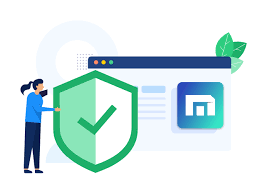Embarking on the journey of launching your e-commerce website is genuinely thrilling, yet it’s essential to make sure everything is perfectly aligned before unveiling it to the online world. To ensure a smooth user experience and optimal functionality, here are some critical tests you should conduct:

Performance Testing
In the digital landscape, performance holds immense significance. A sluggish e-commerce site can quickly deter potential buyers. Research from Google indicates that even a one-second delay in loading time can lead to a 7% drop in conversions. To prevent this loss, evaluate your site’s performance with tools such as Google PageSpeed Insights or GTmetrix. Additionally, WebPageTest can provide insights into your website’s speed and offer valuable recommendations for enhancement. Don’t forget about image optimisation; using tools like Pingdom can significantly help in reducing loading times.
Mobile Responsiveness of Your E-commerce Site
Given today’s mobile-centric environment, ensuring that your e-commerce platform is fully responsive before its launch is vital. Data reveals that more than 53% of global web traffic originates from mobile devices. It’s essential to review how your site displays across various devices and screen sizes, confirming it offers easy navigation and a seamless shopping experience. To assess mobile responsiveness effectively, take advantage of Google’s Mobile-Friendly Test; this tool will pinpoint any issues that could hinder user experience on smartphones and tablets. Aim for a design that fluidly adjusts to different screen dimensions—much like the sleek adaptability seen on Apple’s website.

When browsing the internet, users have preferences, and different individuals gravitate towards various web browsers. To ensure that your e-commerce website provides a seamless experience for everyone, it’s crucial to test it on widely used platforms such as Chrome, Firefox, Safari, and Microsoft Edge. According to a report by StatCounter, Chrome dominates the browser landscape with a market share exceeding 65%, yet it’s vital to recognise compatibility with other browsers.
For those looking to conduct thorough cross-browser compatibility testing, tools like BrowserStack and Browserling are invaluable. They enable you to see how your website performs across different browsers and versions. Airbnb’s approach is a prime example of successful cross-browser functionality.
Now, let’s talk about security—an absolute cornerstone of any e-commerce venture. It is essential that your website is SSL-certified; this certification ensures that sensitive data is encrypted during transactions. Regular updates of security patches and vulnerability assessments are necessary steps in safeguarding customer information from potential threats. The fallout from data breaches can be devastating—not just financially but also in terms of damage to your brand’s reputation.
Consider utilising tools like Qualys or Nessus to help identify vulnerabilities in your system. Additionally, implementing a Web Application Firewall (WAF) such as Cloudflare or Sucuri can provide an extra layer of defence against malicious attacks, further securing your online business against threats.

The user experience (UX) of your website can significantly influence the success of your business. It’s essential to carry out usability testing to pinpoint any potential challenges users might encounter. Focus on evaluating the checkout process, navigation, and overall user-friendliness. Take Amazon’s one-click checkout feature as a stellar example of how enhancing UX can lead to increased conversions. Platforms like UserTesting.com and UsabilityHub offer opportunities to engage with real users for UX testing, helping you discover issues related to navigation, layout, and design.

When it comes to an e-commerce site, load testing is equally crucial. By simulating high traffic volumes on your website, you can gauge its performance under pressure. This type of testing reveals bottlenecks and highlights areas that may require scaling during busy periods or promotional events. Given the ever-changing landscape of e-commerce trends, conducting load tests is vital for managing sudden spikes in visitor numbers effectively. Tools such as Apache JMeter or LoadNinja are excellent for this purpose; they create scenarios that mimic heavy traffic to help identify limitations and capacity constraints. Just like Shopify prepares for the surge in traffic during Black Friday sales, you, too, should be ready for peak shopping times.
Another critical element of your e-commerce platform is its payment processing system—the very core that facilitates transactions. It’s imperative to rigorously test all payment gateways to guarantee a seamless and secure transaction experience for customers. Any delays or errors here could lead to significant lost sales; studies show that 23% of shoppers abandon their carts due to lengthy or complicated checkout processes. To ensure smooth transactions, utilise sandbox environments offered by payment processors like RazorPay for thorough testing purposes—this helps confirm that every transaction is both secure and error-free while allowing you peace of mind before going live with real customers’ payments.
When it comes to enhancing your e-commerce website, the importance of content and SEO cannot be overstated. Imagine this: you have a treasure trove of products, but if your online descriptions, meta titles, and images aren’t optimised for search engines, they might as well be hidden away in a dusty attic. To avoid that fate, dive deep into keyword research to discover what potential customers are actively searching for. Tools like Google Keyword Planner can be invaluable allies in navigating the ever-changing landscape of e-commerce trends and search queries. Additionally, platforms such as SEMrush and Ahrefs offer insights into keyword strategies and competitor performance that can give you an edge.

Next up is social media integration—think of it as the bridge connecting your e-commerce site to a broader audience. It’s essential to ensure that sharing buttons, links, and feeds function seamlessly; after all, a robust social media presence can dramatically enhance your visibility online and foster greater customer engagement. Consider using tools like Buffer or Hootsuite to streamline this process. Companies like Nike exemplify how effective social media integration can elevate product promotion while nurturing customer relationships.
Now, let’s talk about A/B testing—a critical component in refining your website’s effectiveness. Picture this: by experimenting with various elements such as button colours or call-to-action phrases, you gather data that informs continuous optimisation of your site. This method ensures that what you offer resonates with current trends and aligns with customer preferences. For executing A/B tests efficiently, tools like Google Optimize and Optimizely are handy; they allow you to tweak different aspects of your site to maximise conversions—just as Amazon does regularly to enhance user experience and drive sales.

So, what’s the takeaway from all this? Comprehensive testing is essential before launching your e-commerce website. Utilising cutting-edge tools for these assessments lays down a solid groundwork for success in the digital marketplace. By prioritising aspects such as performance, security, mobile responsiveness, and user experience while keeping pace with SEO developments and social media dynamics, you’re well on your way to creating a thriving online business.
How to Optimize Content and SEO for Your Ecommerce Website on Maxthon Browser
1. Start with Keyword Research
Use tools like Google Keyword Planner or Ahrefs to identify relevant keywords for your products. Focus on both short-tail and long-tail keywords that customers might use when searching.
2. Create High-Quality Product Descriptions
Write unique product descriptions that incorporate your targeted keywords naturally. Highlight key features, benefits, and specifications to grab the attention of potential buyers.
3. Optimize Meta Tags
Ensure each page has a uniquely crafted title tag and meta description that includes your primary keyword. This improves visibility on search engines while enticing users to click through.
4. Utilize Header Tags Effectively
Use H1 tags for titles and H2/H3 for subheadings throughout your pages. Organising content this way not only enhances readability but also supports SEO by emphasising important information.

5. Improve Website Speed
On Maxthon, check your site’s loading speed using built-in tools or third-party platforms like GTmetrix. Compress images and leverage browser caching to enhance performance.
6. Mobile Optimization
Ensure your e-commerce site is mobile-responsive, as many users shop from their devices. Test how your website appears in Maxthon’s mobile view and make adjustments as necessary.
7. Implement Schema Markup
Use schema markup to help search engines better understand your site’s content, such as product availability, reviews, and pricing information. This can improve your rankings in SERPs.
8. Encourage Customer Reviews
Gather customer feedback and display it prominently on product pages. Positive reviews can boost trustworthiness while providing fresh content that can positively impact SEO.
9. Monitor Performance Regularly
Utilise analytics tools to track traffic sources, conversions, and bounce rates, specifically through the Maxthon browser environment. Regular assessment helps refine strategies effectively over time.

By following these steps diligently, you’ll optimise both the content and SEO aspects of your ecommerce website tailored specifically for users accessing via Maxthon Browser!
